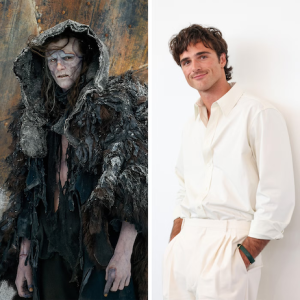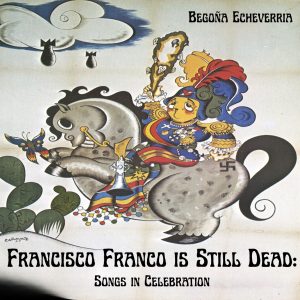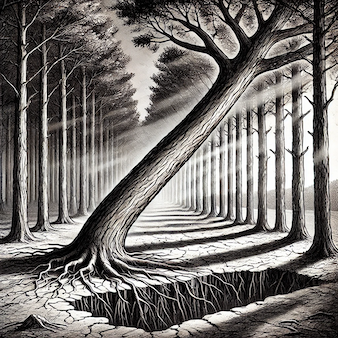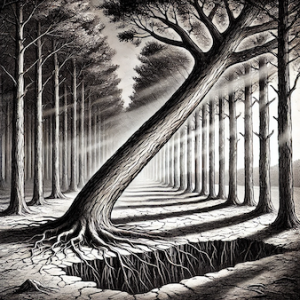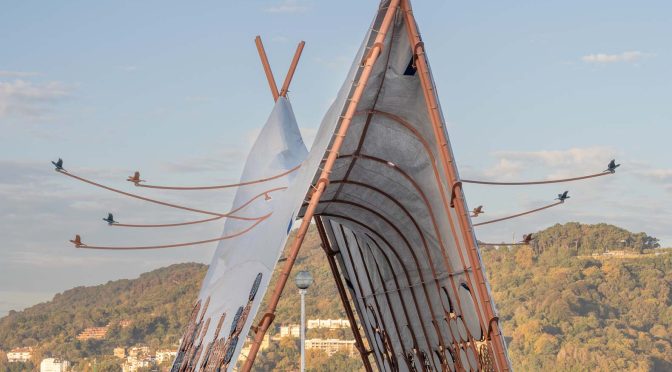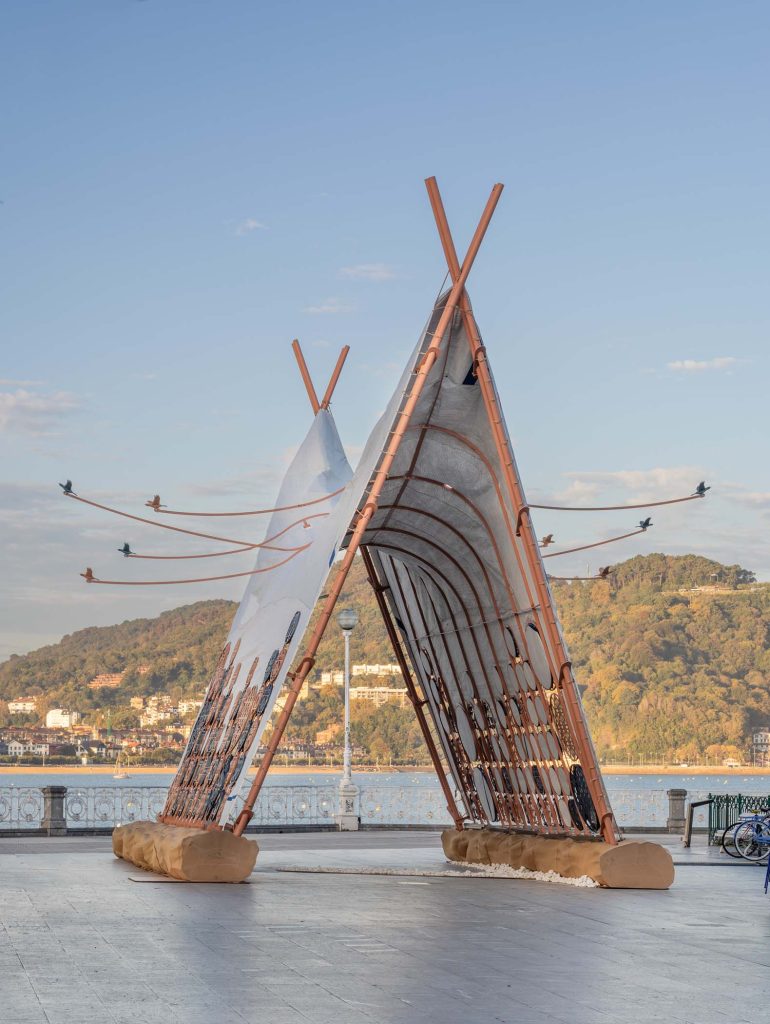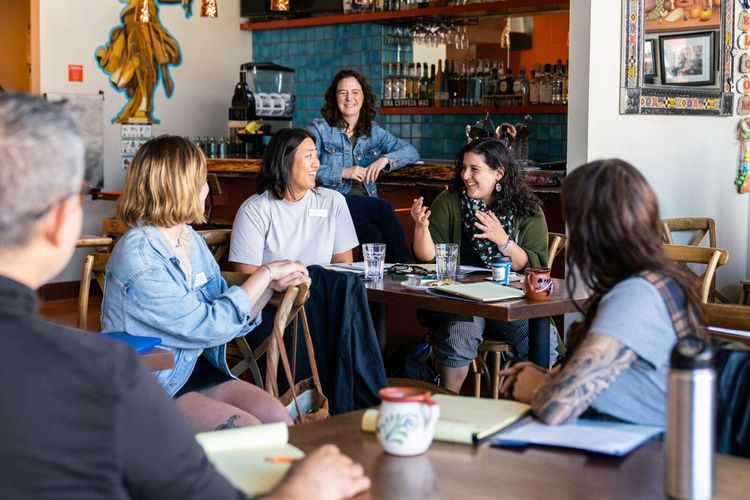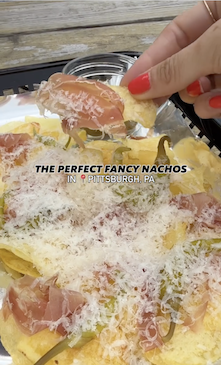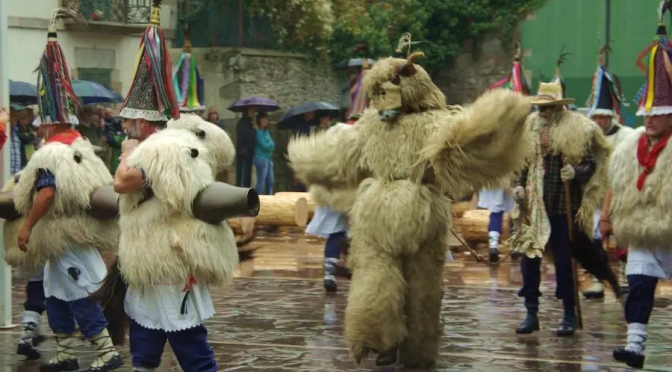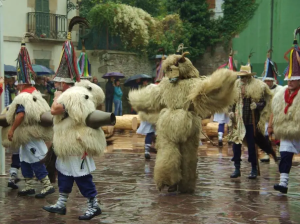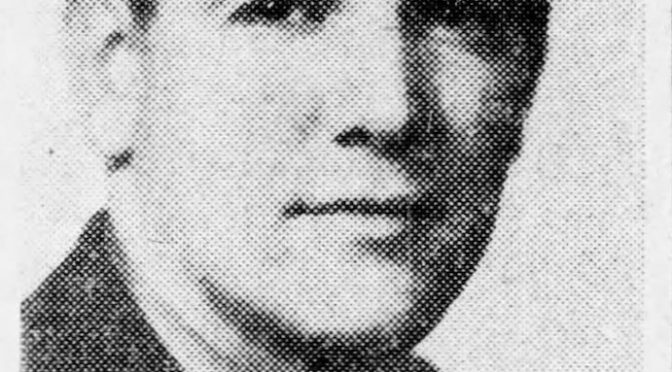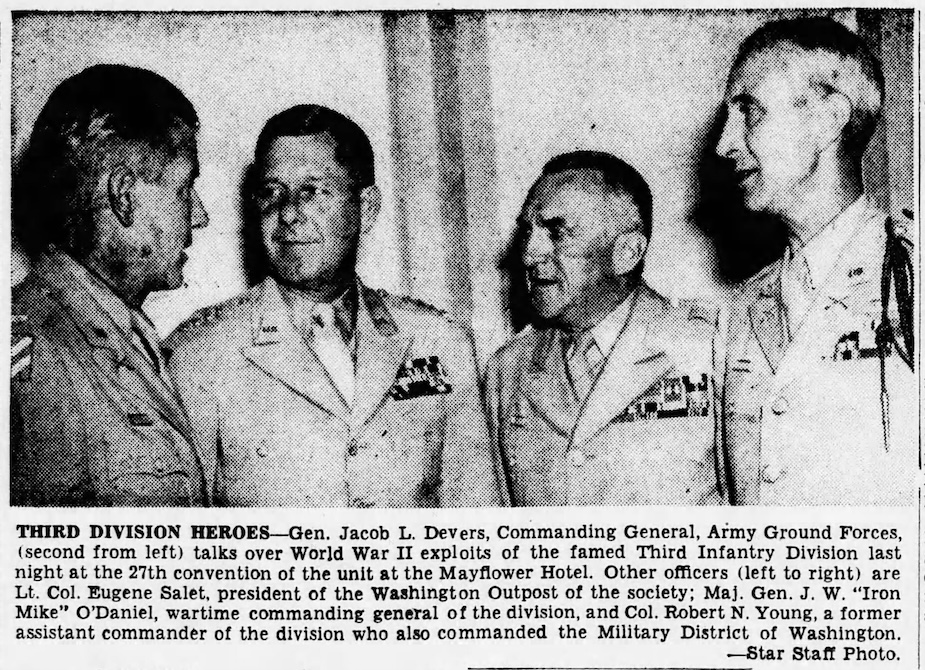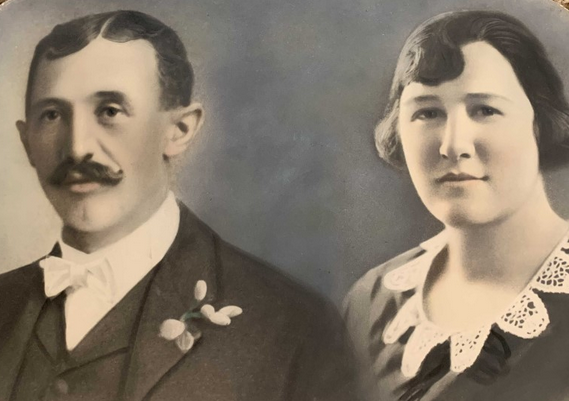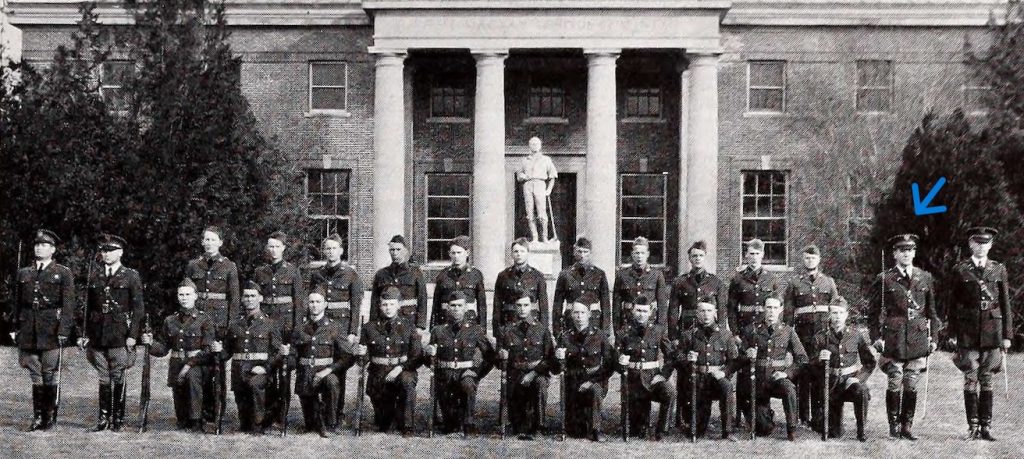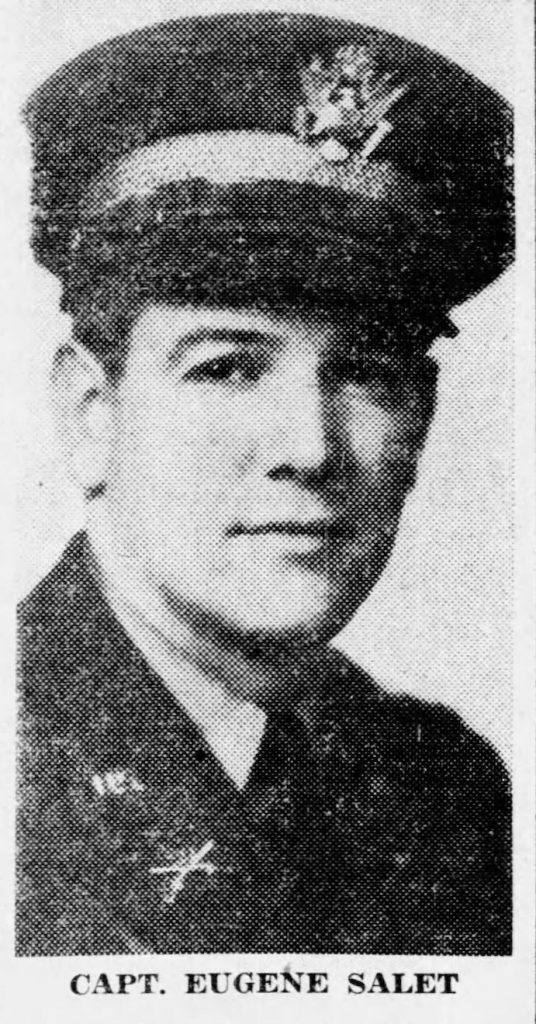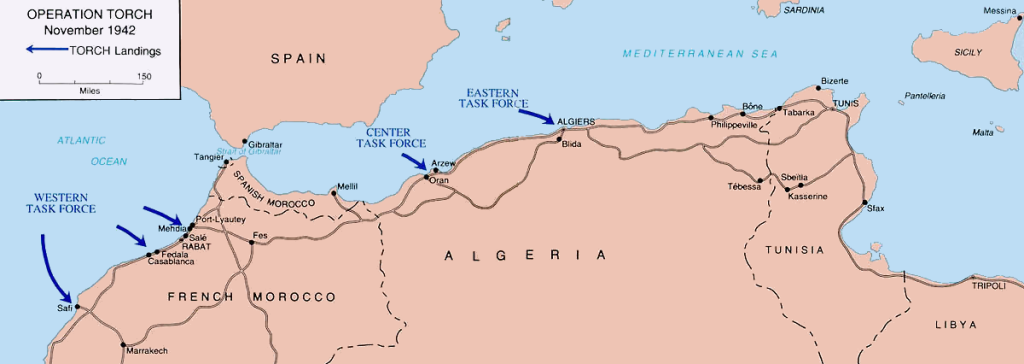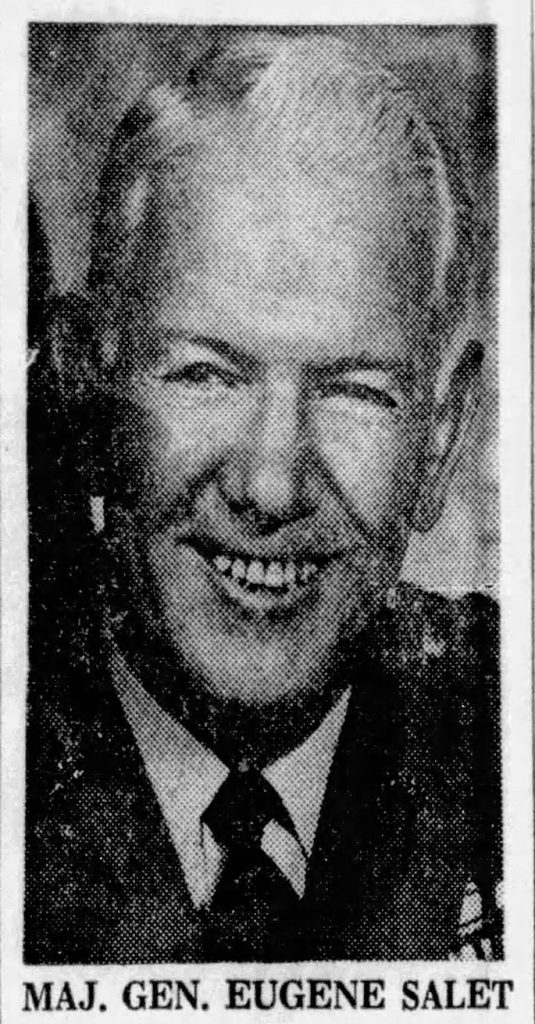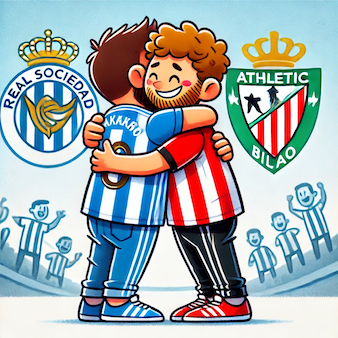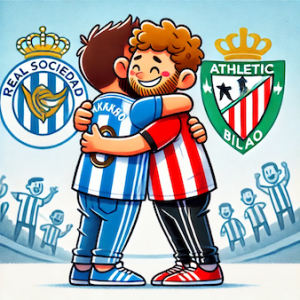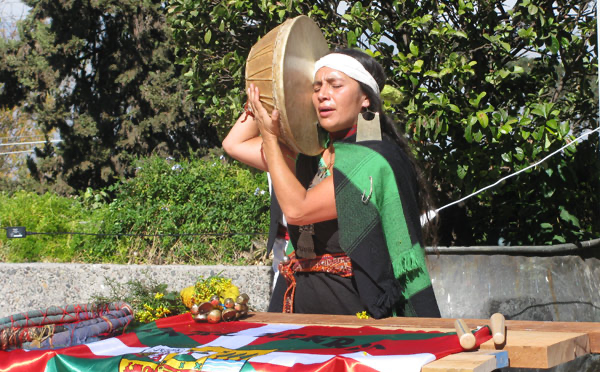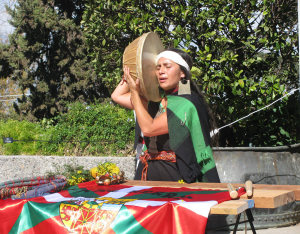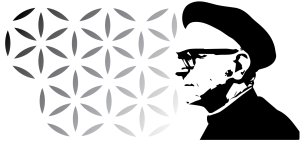Over 100 years ago, in 1921, José Miguel de Barandiaran began publishing a series of articles under the banner of Eusko-Folklore. His work was interrupted by the Spanish Civil War but in 1954 he resumed publishing what he then called his third series of articles. These appeared in the journal Munibre, Natural Sciences Supplement of the Bulletin of the Royal Basque Society of Friends of the Country. While various writings of Barandiaran have been translated to English, I don’t believe these articles have. As I find this topic so fascinating, I have decided to translate them to English (with the help of Google Translate). The original version of this article can be found here.
Traditions and Legends: Lurpeko Eremuetan (In the Subterranean Regions)
Spirits in Animal Form
In the issues of EUSKO-FOLKLORE corresponding to the second series (Sara, 1947-1949), I collected various beliefs and legends related to deities or spirits of the earth or the subterranean regions who take the form of animals. Many of these stories feature the horse, the mare, the bull, the cow, the ram, the lamb, the sheep, the pig, the goat, the dog, the snake, and the dragon.
To the legends collected there, we can add others that develop the same themes or repeat the same images and figures.
For example, the subterranean spirit, who appears in the form of a horse and who spreads over an area whose landmarks are Laguinge (in Basque, Liginaga), Sara, Berástegui, and Lizarrabengoa. (EUSKO-FOLKLORE, 2nd Series, 1947) is mentioned in the following legend of this last locality:
On the road from Lizarrosti to Ormazarreta, a shepherd appeared on a white horse and asked him where the Putterri cave was. The shepherd showed it to him, and the knight gave him a coin as a reward, then departed and disappeared from the shepherd’s sight. And his money, in the shepherd’s hands, turned to dust.
(Told in 1955 by Don Ramón Arratibel, a native of Lizarrabengoa, currently a resident of Ataun.)
In the Putterri cave lives the being Mari, who is called Putterri’ko Dama, according to the beliefs in Arbizu, as will be explained later.
The region of the supernatural being that appears in the form of a txaal (calf) or a txekor (young bull) is marked by the towns of Camou, Iholdy, Lizarza, Ataun, Arlucea, Marquínez, Oquina, Bermeo, Oñate, and Orozco. The region of the being that takes the form of a bei (cow) or a bei-gorri (red cow) is marked by Ezpeleta, Lesaca, Amézqueta, Beizama, Motrico, and Marín (Escoriaza), according to data collected in EUSKO-FOLKLORE, 1924, pages 15, 16, 18, 19, and 20; EUSKO-FOLKLORE Yearbook, 1921, page 89. EUSKO-FOLKLORE, 2nd Series, 1947. The Legend of Marín is as follows.
A charcoal burner, during his charcoal-making days, would go every night around midnight to look at the pyre. One night, as he was going to do this work, he found an animal like a cow lying on the road. “Get up!” he said to it; but it didn’t move. “Get up!” he said again; but it didn’t move. When he had said “Get up!” the third time, it got up and, ringing a bell, “chilin, chilin,” looked at the charcoal burner and said these words: “Night for the night, and day for the day.” The charcoal burner, terribly frightened, returned home from the forest and never wanted to return to the forest.
(Communicated in 1934 by Mr. José Ascarate, from Marín).
This spirit also takes the form of urde “pig” in various folk tales from Amézqueta, Bermeo, Sara, and Marquina. In the latter town, it is called Iruztargia, related to the themes of another being named Iratxo. This figure takes the form of a fire-breathing pig that flies at night, according to legends from the Marquina region, which I collected on June 6, 1936, in the Makarda farmhouse.
Very frequently, the spirit or being of the subterranean regions appears in the form of aker “goat,” aker-beltz “black goat,” and auntz “nanny,” as we see in the legendary tales of Pierre de
Lancre and all those who have dealt with witchcraft in the Basque Country.
The name aker has left its mark on toponymy. The well-known place names are Akelarre “goat meadow,” located in Zugarramurdi and repeated on Mount Mañaria (Vizcaya); Akerlanda “goat field” in Gautéguiz de Arteaga; Akelarren-lezea “cave of the Akelarre” located next to the Akelarre meadow in Zugarramurdi.
Current legends from Urepel tell us about the goat in the cave of Mount Auza, and those from Villafranca refer to the spirit that appears in the form of a goat. See EUSKO-FOLKLORE, 2nd Series, 1948 and 1949. The goat is considered a protective animal for livestock in the stable and the flocks (Ataun, Sara). For this reason, in some houses they raise a goat—black being preferred—to prevent diseases in the livestock.
In St-Jean-le-Vieux (in Basque, Donazaharre), the lady of the Luko house told me in 1945 that an azti (diviner and healer) called Maille lived in the Iberteia house in that village in the middle of the last century, who, before issuing his oracles, consulted a goat he owned. It is said that his prophecies, especially his curses, were unfailingly fulfilled.
The subterranean spirit rarely appears in the form of a dog. However, certain legends mention him, such as those of Olanoi (Beizama) from Motrico and Berriz. EUSKO-FOLKLORE. 2nd Series, 1947 and 1949.
Many legends refer to the spirit known as Sugaar “male serpent” or Sugoi, who appears in the form of a serpent.
Toponymy has echoed these legends, as evidenced by the name Sugaarzulo “chasm of Sugaar” used to designate two caverns in Ataun, located above the Arrateta Gorge and the Aspildi Ravine, respectively.
The same spirit appears to be the one who appears in other legends with the names Egansube, Ersuge, Erensuge, Herainsuge, Iraunsuge, Igensuge, Edensuge, Edaansuge, Lerensuge, etc. He is mentioned in many folk tales we have collected in Orduña, Dima, Ochandiano, Lequeitio, Mondragón, Ataun, Zaldivia, Rentería, and Zugarramurdi. Sara, Ezpeleta, St-Esteben, Uhart-Mixe, Camou, Alzaay, Liginaga or Laguinge. etc. (EUSKO-FOLKLORE, 2nd Series, 1949).
Geniuses with a human or semi-human form. Mari
The most prominent deity of the underworld is Mari, as we can infer from the beliefs and legends that refer to her. She receives various names, depending on the locality, such as Mari, Mari-muruko “Mari of Muru” (in Ataun and Elduayen), and Mari-mur (in Leiza), Mamur (in Vera), Maya (in Oyarzun), Mariburrika (in Berriz and Garay), Gaiztoa “the evil one” (in Oñate), Yona-gorri “she of the red dress” (in Lescun), Sugaar (in Ataun), etc. (1). Mari, Dama, and Señora are equivalent. Mari is also supplanted by Lamiña in many cases.
(1) José Miguel de Barandiarán: Contribución al estudio de la Mitología vasca (en “Homenaje a Fritz Kruger”, tomo I, Mendoza, 1952)
Various themes have centered around the deity or name Mari: A beautiful woman combing her hair while sitting in the sun at the entrance to her cave; the mistress of all the beings or spirits of the subterranean regions; she forges and directs storms; she produces rain and drought; she punishes liars; she lives on “yes” and “no”; she takes the form of various animal species (heifer, bull, ram, goat, horse, mare, snake) and certain atmospheric phenomena, such as a meteor, a cloud, etc.; she holds disobedient young people captive; she is incompatible with anything of Christian significance, etc.
We have collected many Mari legends in various publications, such as EUSKO-FOLKLORE (1921, pp. 9-17; December 1922, pp. 29-30); in Mari o el genio de las montañas (“Homenaje a Don Carmelo de Echegaray”. San Sebastián, 1923); In Die prahistorischen Hohlen in der baskischen Mythologie (“Paideuma,” vol. II, no. 1-2. Leipzig, 1941) and in its Spanish translation Las cavernas prehistóricas en la mitología vasca (“Cuadernos de historia primitiva,” Madrid, 1946) and in Contribución al estudio de la mitología vasca (“Homage to Fritz Kruger,” vol. I. Mendoza, 1952).
Jean Barbier included in his Légendes du Pays Basque d’aprés la tradition (first part, no. 6; third part, no. 2. Paris, 1931) some themes that are part of the Mari cycle in several Basque regions. Barbier calls her Bas’Andrea, “the lady of the forest or wilds.”
W. Webster mentions some of the Mari themes in his Basque Legends (London, 1879, pp. 47-48), as does Cerquand in Légendes et Récits Populaires du Pays Basque (Pau, 1876, I, pp. 33 and 34).
Azkue included several legends from the Mari cycle in Euskalerriaren Yakintza (Vol. I, Chapter XV, Nos. X and XII. Madrid, 1935; Vol. I, Nos. 194, 203, and 235. Madrid, 1942).
To the legends and traditions collected in the preceding publications, we can add others, which we will copy below.
The elderly J. M. Goiburu, who had been a shepherd in Aizkorri since childhood, told me in 1943 that in his hometown of Ursuaran, he once saw the Lady of Amboto (another name for Mari) soaring through the air from Aizkorri toward Amboto, in the form of a woman wrapped in flames and bent like a sickle.
In Mañaria, they call this spirit Mariurreka, and they say she spends seven years in Amboto, seven in Oiz, and seven in Mugarra (the rock of Mañaria).
In this village, they also call Saint Anthony’s cow, or Coccinella septempunctata, Mariurreka or Mariurrika.
Abbé Larzabal, from Ascain, told me in 1948 that, according to an old belief in that village, a lady lived in a cave called Arrobibeltxa, who was depicted sitting on a golden seat.
In Lacunza, they call her Illunbetagañe’ko Damea and Beraingo-lezeko Damea.
In Arbizu, she is known by the name Putterri’ko Dama “Lady of Putterri” (Putterri is a mountain in that region). And in Urdiain, she is known by the name Baso’ko Mari “Mari of the Forest,” according to what a shepherd from that village in Urbasa told me in 1921.
In Ispaster, when the peak of Otoyo was crowned with clouds, people frequently said: Marie labakok labakoa dauko da euria eingo dau laster (Mari of the oven bakes the bread, and it will soon rain), according to data collected in that village in 1927.
On the hill near the Adurria basseri (Ispaster), there is a cave called Damazulo. At its entrance, there is a hut. It is said that the Lady of Amboto came to this cave to spend some time.
An old woman from the Dorrea house in the village of Udabe (Navarra) claimed that a spirit named Mari-burute lived in a cave on the mountain above that village, and added that the local priest had to go once a year to bless the cave; otherwise, storms and hail would fall throughout the year.
Doña Juliana de Azpeitia sent me the following note from Evaristo Gómez Inchausti, from Zumárraga, who had given it to her in 1907:
When the sun and rain coincide, the Lady of Amboto emerges from her cave and combs her beautiful hair with a golden comb. And on Friday afternoons, at two o’clock, the enemy from hell [the devil] comes to comb her hair.
According to a report from Azcoitia, it is Maju, Mari’s husband, who occasionally goes to meet with her, thereby causing a furious storm.
In Gorriti, this spirit is called Adureko-Mari, who lives in a chasm in Aralar from where she draws storm clouds. It is said that a priest performs a spell at the mouth of this chasm once a year. If Mari is inside at that moment, there will be no hail in the region for that year.
According to a report by Father Gregorio Bera, it is said that the Lady of Amboto spends six years on the rock of Amboto. She then moves to Gorbea (according to others, to Atxali, Yurre), where she remains for another six years. As she moves from one place to another, she throws off sparks. (Reported in 1921).
Father Bera himself told me that in Abadiano there was a belief that a great lady named Mariurraka lived on the Amboto rock, who used to spin thread. From time to time, she would go to Mount Kampanzar, surrounded by great fires. She would then return to Amboto.
The following legend is also from Abadiano:
A king of Navarre said: “I will give one of my daughters in marriage to whoever defeats a black man from here in wrestling.” So the man from the house of Abadiano, called Muntzas, came and defeated that black man. The king gave him a daughter of his own, as he had said, and that daughter of the king and that man from Abadiano, married, came to live in the Palace of Abadiano, located in the Muntzas neighborhood. They had sons and daughters: Ibon was the eldest, and Mariurrika, full of pampering, was the youngest.
One day, a maid and Mariurrika, in concert, planned to kill Ibon because the inheritance was due to him. And so, they went once to Amboto to spend a day. After they arrived, they sat down to eat, and while they were eating, they gave Ibon a lot of wine to drink, and they got him drunk While he was asleep from drunkenness, the maid and Mariurrika pushed him and threw Ibon down the rocks, where he died.
After he returned home, Mariurrika told his father that Ibon had fallen from the rocks. But his conscience accused him of having done wrong.
When night fell, while Mariurrika was in the kitchen, the devils came down through the chimney. When Mariurrika was dead, he flew from Amboto to Oiz, in the form of a flame.
Amboto has a cave—the cave of Mari—and another in Sarrimendi.
(Report by S. Gastelu-iturri, native of Abadiano. Year 1931).
MARIBURRIKA OF SARRIMENDI (1)
(1) Sarrimendi, mountain of Sarria in Berriz (Vizcaya).
The people of Andikona and those of Sarria (2) were always arguing over water. A stream flowed from Mount Oiz, and those of Andikona blocked the road to Sarria and carried the water to Andikona. And those of Sarria blocked the road to Andikona and carried the water to Sarria.
(2) Andikona and Sarria, two neighborhoods of Berriz.
One day when the people of Andikona had turned off the water, the demon appeared to the lady of Sarribeiti and asked what she would give him so that he would always send the water to Sarria. And the lady told him that she would give him her daughter.
Upon hearing this, the demon sent the water to Sarria and claimed the daughter from the lady. And the lady told him that she would send her daughter to the meadow that is next to the cave of Mariburrik de Sarrimendi to take care of cows. There, he could kidnap her.
The little girl went to collect the cows, and when she called “white, white,” Mariburrika came out of the cave and snatched the girl and took her to her lair.
Next to the Urizar house, there is a small cave—which they say is the end of Mariburrika’s cavern—and there they found the girl’s clothes.
(Report by Juan Loizate, from Berriz. Year 1931).
IN MARIN AND ESCORIAZA
A mother and daughter lived in a house. The daughter was always occupied with adorning her body, disregarding her mother’s orders. One day, she gave her mother a disrespectful answer, and her mother, angry, cursed her: “May heaven and earth not receive you again.” That’s why she now always wanders in the air. She resides in the Amboto cave by day, spinning and spinning; but she can’t make any thread. At night, leaving the cave and throwing sparks, she moves to other places.
(Report by José Azcarate, from Marín, 1934.)
A rich lady lives in Amboto, and three times a year she comes to Kurtzebarri (1). She flew by in the shape of a very beautiful moon; but a half-moon. Faster than lightning, shooting fire all around. It used to happen in the past, and according to our grandmother, it was a sight to behold.
(1) Kurtzebarri “New Cross”, mountain of Escoriaza.
(Reported in 1935 by José Aramburuzabala, from Escoriaza.)
José Miguel de Barandiaran
Share this / Partekatu hau:
Like this:
Like Loading...
